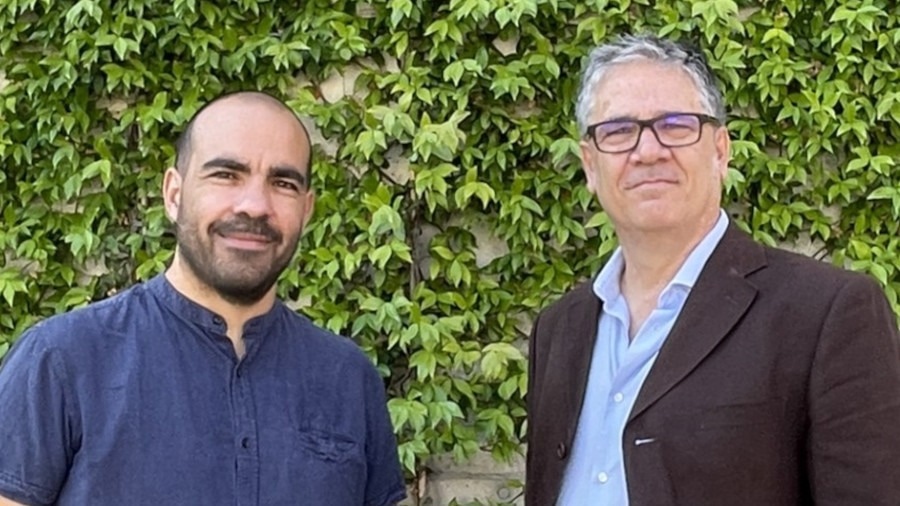Reviewed by Lexie CornerJul 10 2024
Researchers at the Universitat Autònoma de Barcelona (UAB) worked on developing a switch, a crucial component of modern telecommunications that can run at a very high frequency while using less power than existing systems. The technology is more energy-efficient than existing devices and has uses in the upcoming 6G mass communication networks. The study has been published in Nature Electronics.
 Researchers Jordi Verdú (left) and Pedro de Paco (right) at the UAB. Image Credit: Universitat Autònoma de Barcelona.
Researchers Jordi Verdú (left) and Pedro de Paco (right) at the UAB. Image Credit: Universitat Autònoma de Barcelona.
The switch, which can either allow or block an electrical signal to pass (in the ON or OFF states), is a crucial component for signal control in electronic communication devices. The quickest components currently in use for this purpose are silicon-based and operate with signals at tens of gigahertz (GHz). These components are known as RF silicon-on-insulator MOSFET switches.
However, they are volatile, meaning that to keep them in the ON state, they need a continuous power source. To meet the demands of the Internet of Things (IoT) and the growing popularity of virtual reality, as well as to improve current communication systems, it will be necessary to increase the frequency of the signals that these elements can act with and improve their performance.
Researchers from the UAB Department of Telecommunications and Systems Engineering have collaborated internationally to develop a switch that can operate at twice the frequency of current silicon-based devices, up to 120 GHz, without requiring a constant voltage. This is the first time such a switch has been created.
The new switch operates by applying an electrical voltage pulse rather than a continuous signal because it is made of a non-volatile material called hBN (hexagonal boron nitride). Substantial energy savings can be realized in this way.
Our research team from the Department of Telecommunications and Systems Engineering at the UAB was involved in the design of the devices and their experimental characterization in the laboratory. For the first time, we have been able to demonstrate the operation of a switch based on hBN, a non-volatile material, in a frequency range of up to 120 GHz, which suggests the possibility of using this technology in the new 6G mass communications systems, where a very high number of these elements will be required.
Jordi Verdú, Researcher, Department of Telecommunications and Systems Engineering, Universitat Autònoma de Barcelona
Verdú said this is a “very important contribution, not only from the point of view of device performance but also towards a much more sustainable technology in terms of energy consumption.”
The ability of memristance, or the change in electrical resistance of a material when a voltage is applied, is what makes these devices function. Up until now, memristors—devices with memristance—made of two-dimensional networks of hexagonal boron nitride (hBN) bonded together to form a surface have been used experimentally to develop high-speed switches.
With this configuration, the device frequency could reach 480 GHz, but only for 30 cycles, meaning it would be useless. Utilizing the same material, the new proposal arranges it in a superposition of layers (a total of 12 to 18 layers) that can function at 260 GHz and have high enough stability to be used in electronic devices.
Researchers from the UAB Jordi Verdú Department of Telecommunications and Systems Engineering, Eloi Guerrero, Lluís Acosta, and Pedro de Paco, as well as researchers from the University of Texas at Austin (USA), the Tyndall National Institute, and University College Cork (both in Ireland) participated in the research. The research was coordinated by the King Abdullah University of Science and Technology (KAUST) in Saudi Arabia.
Journal Reference:
Pazos, S., et al. (2024) Memristive circuits based on multilayer hexagonal boron nitride for mm-wave radiofrequency applications. Nature Electronics. doi.org/10.1038/s41928-024-01192-2